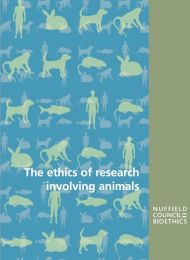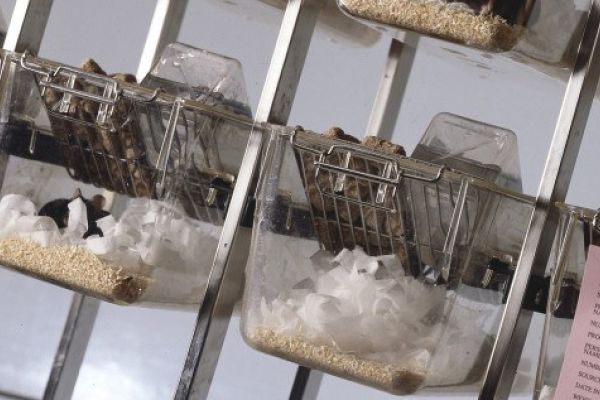The ethics of research involving animals
Report
Published 24/05/2005

Is it morally acceptable to cause pain, suffering and death to animals?
The question of defining the moral status of humans and animals often arises in the debate on research involving animals. Are humans morally more important than all animals? Is there a sliding scale with humans at the top and the simplest animals at the bottom? Or are humans and animals morally equal?
We suggest that the proper moral treatment of a being depends on the characteristics it possesses, rather than simply on the species to which it belongs. We identify five morally relevant features:
- Sentience (the capacity to feel pleasure and pain)
- Higher cognitive capacities (for example, the ability to use language and learn complicated tasks, such as making and using tools)
- The capacity to flourish (the ability to satisfy species-specific needs)
- Sociability (being a member of a community)
- Possession of a life (attributing value to life itself)
Ethical decision making
What weight should be given to each of the morally relevant features in considering whether or not research is acceptable? Are they factors to be weighed against human benefit? Should they be understood as absolute constraints? For example, should any use of animals that are capable of suffering be prohibited, or only the use of those that have higher cognitive capacities?
Many people seem to support a ‘hybrid’ approach. This involves a combination of laying down definite limits for what should and should not happen (for example: ‘animals with higher cognitive capacities, such as chimpanzees, should never be used in research’) and weighing up the costs and benefits of a particular action (for example: ‘research that causes minimum pain to a mouse is acceptable if it helps to ascertain the safety of an important and frequently used chemical’).
This approach can also be found in the Animals (Scientific Procedures) Act 1986: the costs and benefits have to be weighed for each project and there are specific policies that prevent the use of the Great Apes and the use of animals in the testing of new cosmetics.
The ethical debate comes down to disagreement on two questions:
- What are the definite limits?
- How do we weigh the different morally relevantfactors within the permitted limits?
To provide answers, we need to consider at least five further related questions:
- What are the goals of research?
- What is the probability of success?
- Which animals are to be used?
- What effect will there be on the animals used in the experiment?
- Are there any alternatives?
Ethical positions
After considering these questions, members of the Working Party agreed that there was no single view to which they could all subscribe, thus reflecting the range of views that exists in society. Instead, we describe four possible ethical positions, which represent points on a continuum.
The report does not advocate any one viewpoint as ‘right’. Rather, the reader is invited to decide which they find to be the most acceptable.
The ‘anything goes’ view
If humans see value in research involving animals, then it requires no further ethical justification (no member of the Working Party took this position).
The ‘on balance justification’ view
Research involving animals is morally acceptable if the costs are outweighed by the benefits, but every reasonable step must be taken to reduce the harm to animals.
The ‘moral dilemma’ view
Most forms of research involving animals pose moral dilemmas. Animal research is morally unacceptable, but so is avoiding research that could be beneficial to humans or animals.
The ‘abolitionist’ view
There is no moral justification for any harmful research on animals that is not to the benefit of the individual animal. Humans experiment on animals not because it is right but because they can.

Share